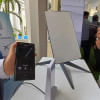Could Starlink solve the connectivity challenges in Bangladesh?

Recently, I went on a business trip to Cox's Bazar, where I had to attend several meetings virtually. Unfortunately, I could not complete any of those meetings due to weak internet connectivity there. A few months earlier, I was visiting the Sundarbans area where I wanted to connect with friends and family, but there was no connection. In Bangladesh, while urban regions enjoy relatively good internet and mobile network coverage, vast parts of the country, especially in rural, hilly and coastal areas, struggle with limited or no connectivity, with some places still relying on 2G networks only. The prohibitive cost and complexity of building mobile phone towers and other infrastructure in sparsely populated regions make it difficult to improve coverage in these areas. According to the preliminary report of the Population and Housing Census 2022, approximately 6.5 crore people aged 18 and above in Bangladesh do not have internet access. This indicates a significant digital divide in the country.
To address the connectivity issue, the efforts to bring Non-Geostationary Satellite Orbit (NGSO) networks, such as Starlink, in Bangladesh is a bold step by the government. Starlink, the satellite internet service developed by SpaceX, is becoming increasingly popular across the globe for providing connectivity, especially in remote or underserved regions where traditional ground-based networks are not available. Starlink, with its constellation of low Earth orbit (LEO) satellites, can provide internet connectivity directly to users in these areas without relying on ground-based infrastructure. It is kind of a plug and play kit that includes a dish (user terminal) and a router. The dish connects to the Starlink satellites while the router connects to the dish and provides wi-fi in a home, community facility or business.
In regions with hilly or mountainous terrain, laying cables is difficult and expensive, as transporting construction equipment to remote sites can be challenging. Meanwhile, coastal regions and low-lying areas are vulnerable to flooding, and underground cables there need frequent maintenance and repair. In such areas, Starlink can provide a cost-effective satellite backhaul, ensuring that mobile networks stay connected. Through satellite backhaul, mobile operators can expand their network reach and provide better services in remote areas. Starlink can partner with telecom operators in Bangladesh to provide satellite backhaul for mobile towers.
We remember what happened when Cyclone Remal struck Bangladesh's southern coastal regions in May 2024. The cyclone's impact was particularly severe on the nation's telecommunications infrastructure. As the storm approached, power outages became widespread, with the Bangladesh Power Development Board (BPDB) reducing electricity generation by more than half to prevent accidents during the cyclone. This led to at least 10,000 mobile towers, or base transceiver stations (BTS), to go out of service. Millions of people were affected by this disruption in mobile and internet services. The widespread loss of connectivity severely hampered communication and coordination efforts during the disaster response. Relief operations faced challenges in reaching the affected communities, and people struggled to contact emergency services or inform relatives of their safety.
This situation underscored the vulnerability of essential communication infrastructure to natural disasters and highlighted the need for more resilient systems to ensure continuous connectivity during emergencies. In such circumstances, Starlink could play a critical role in mitigating communication disruptions as it doesn't rely on ground-based infrastructure and could continue to provide internet access even if local mobile towers or fibre connections were down. Starlink terminals can be quickly set up and deployed in emergency response zones as they are portable and can be activated with minimal effort.
The Internet of Things (IoT) is gradually gaining importance in Bangladesh, with applications in agriculture, healthcare, and smart city development. However, the coverage of IoT networks largely depends on the existing 3G and 4G mobile infrastructure, which remains limited in rural and remote regions. Expanding IoT applications requires better connectivity, especially outside urban areas. Mobile phone networks and NGSOs can work together to offer reliable connectivity for IoT devices in Bangladesh. While mobile networks are ideal for dense, urban environments, Starlink can provide connectivity for IoT devices in remote or rural areas.
However, Starlink networks face several technical challenges that include latency and handover. More importantly, the cost of Starlink service is a significant barrier for widespread adoption in countries like Bangladesh, where economic challenges persist for many people. A Starlink kit costs around $549 to $599. The cost for the monthly internet service varies based on location and specific plan, but generally it ranges between $110 and $120 per month. This is much higher than local data and broadband costs.
The government needs to be proactive in eliminating this cost barrier. A business model is required to reduce the cost of initial setup and monthly subscription fee of Starlink services. One possible solution is to offer monthly rental of devices with long-term contracts. The government can also establish community-based models, where people can pool their resources to share a single Starlink connection. In some cases, businesses may subsidise the cost of Starlink internet to provide connectivity in underserved areas. This could enable affordable internet access where other solutions are economically unfeasible.
Dr Sabbir Ahmad is a researcher, mentor, and a leader in project delivery and engineering. He can be reached at [email protected].
Views expressed in this article are the author's own.
Follow The Daily Star Opinion on Facebook for the latest opinions, commentaries and analyses by experts and professionals. To contribute your article or letter to The Daily Star Opinion, see our guidelines for submission.

 For all latest news, follow The Daily Star's Google News channel.
For all latest news, follow The Daily Star's Google News channel. 










Comments